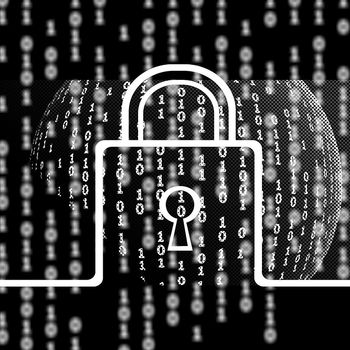
Ransomware, which targets individuals, businesses and governments alike, has become one of the biggest threats to IT security. When hackers encrypt valuable data and demand hefty ransoms, it cripples operations and causes severe financial losses and enormous reputational damage.
There are attacks that have made big headlines in the past, but the ransomware threat has become an unfortunate reality for virtually every business. According to the Veeam Data Protection Trends Report 2023, 85 percent of companies were affected by at least one ransomware attack last year, and almost half, 48 percent, were affected by two or three attacks.
With hackers constantly changing their tactics and finding new ways to bypass security measures, it is only a matter of time before an attack will be successful. Traditional prevention, such as firewalls and antivirus software, is still important, but is not enough. Organizations must prioritize robust data security to minimize operational, business continuity and reputational impacts. While many recognize the importance of this shift, defending against ransomware attacks requires greater emphasis on strengthening disaster and recovery plans and processes.
Paying ransom is not a solution
Paying the ransom is not an option and neither is simply backing up the data. Our 2023 Veeam Ransomware Trends Report showed that the majority (80 percent) of organizations chose to pay the ransom last year to stop an attack and recover their data, up 4 percent from the previous year, although 41 percent of companies actually have to comply with a “do-not-pay” policy (aka “no-pay” policy) when it comes to ransomware. Of those who paid the ransom, only 59 percent were able to recover their data, while 21 percent still lost their data. The report also answers why a simple backup is not enough: Over 93 percent of attackers also target backups and were successful in impairing their victims' recovery options in 75 percent of cases. For this reason, a well-thought-out disaster recovery strategy must be in place.
A reliable disaster recovery process consists of three phases: preparation, response and recovery. Preparation includes immutable backups and a prepared recovery location. Many companies only think about this when it is too late. The original environment cannot be restored, it is endangered and an active crime scene. It is not recommended to prepare a new cloud environment for the first time and only have to get it up and running when a ransomware attack is already underway. Effective disaster response includes incident reporting and containment, a defined operational response, and forensic investigations to ensure knowledge of what was truly affected and what environments or backups were damaged.
Find the right basis
Preparing for disaster recovery is only effective if backups are bulletproof. If a company only has a single copy and it is damaged during the attack, those responsible are left with nothing or back to square one. With this in mind, companies must instead follow a few golden rules to increase their cyber resilience.
Security teams need an immutable copy of critical data so hackers cannot alter or encrypt it.
Data encryption is crucial to making stolen or corrupted data inaccessible and useless to cybercriminals.
The most important aspect of strengthening your strategy is following the 3-2-1-1-0 backup rule. This is crucial to ensuring reliable data backup and data recovery. It states that at least three copies of the data must be retained to ensure that even if two copies are compromised or fail, an additional copy is available. Because the probability of three storage devices failing at the same time is low. Companies should store these backup copies on two different media, such as one copy on an internal hard drive and another in the cloud. One copy should always be stored in a secure, off-site location, while another copy should be kept offline (air-gapped) without connection to the primary IT infrastructure. Finally, the zero is crucial: the backups should not cause errors during the restore. To achieve this, regular testing must be carried out, which should ideally be complemented by constant monitoring of the recovery process and training of professionals.
Escaping ransomware’s stranglehold
There is no doubt that ransomware attacks will continue to evolve and increase in scope, sophistication and impact. It is no longer a question of when a company becomes the target of a cyber attack, but rather how often. This evolution has caused ransomware defenses to shift from prevention to recovery.
Security and prevention are still important, but error-free and therefore fast recovery is the ace in the fight against ransomware. It is critical that every company has a well-thought-out disaster recovery plan. By investing in modern data protection and recovery technologies and establishing robust disaster recovery plans, IT decision-makers can significantly increase their resilience, recover more quickly from attacks, and escape the ransomware snake.
More at Veeam.com
About Veeam Veeam offers companies resiliency through data security, data recovery and data freedom for their hybrid cloud. Veeam Data Platform offers a single solution for cloud, virtual, physical, SaaS and Kubernetes environments, giving businesses the confidence that their applications and data are protected and always available to keep their businesses running.
Matching articles on the topic
